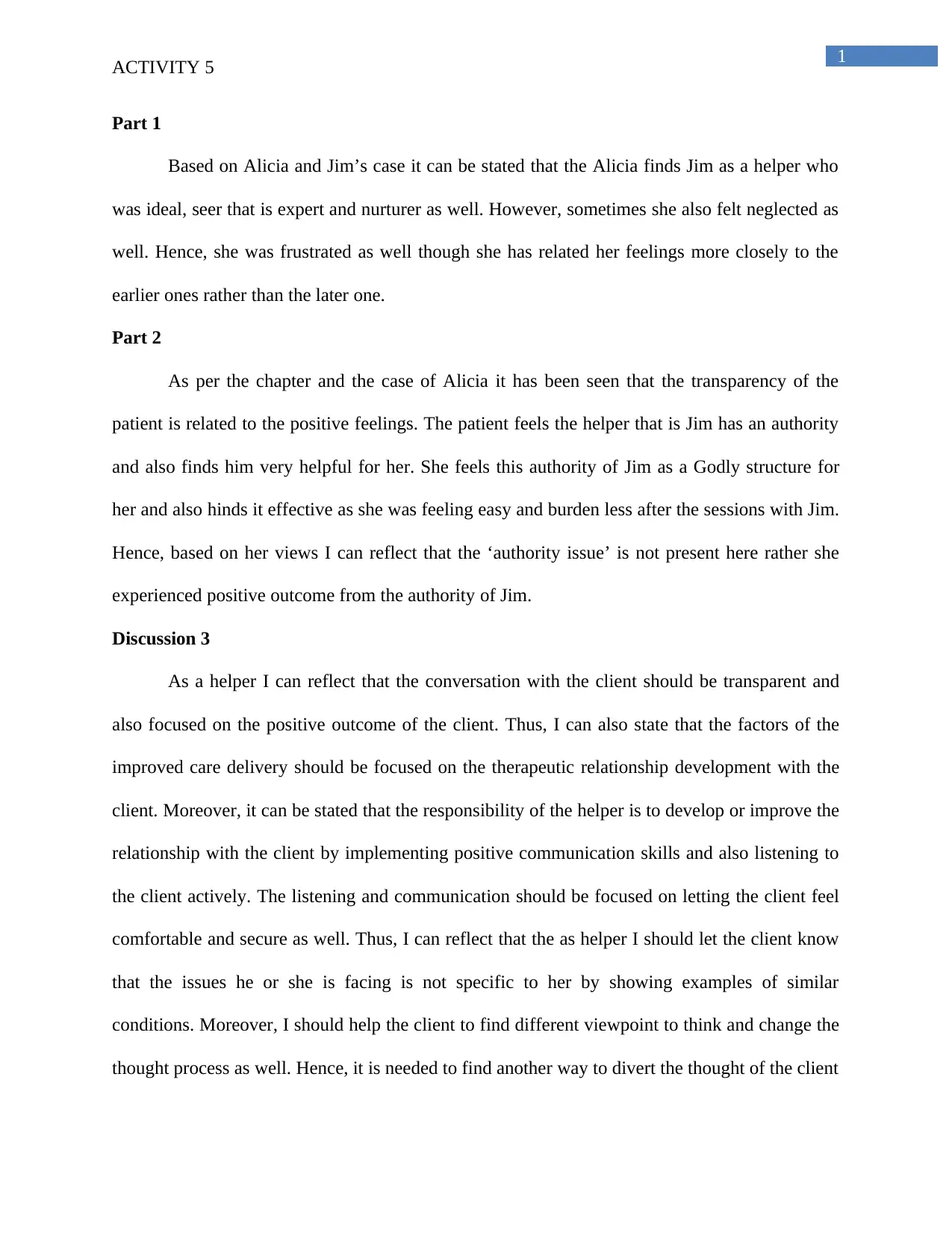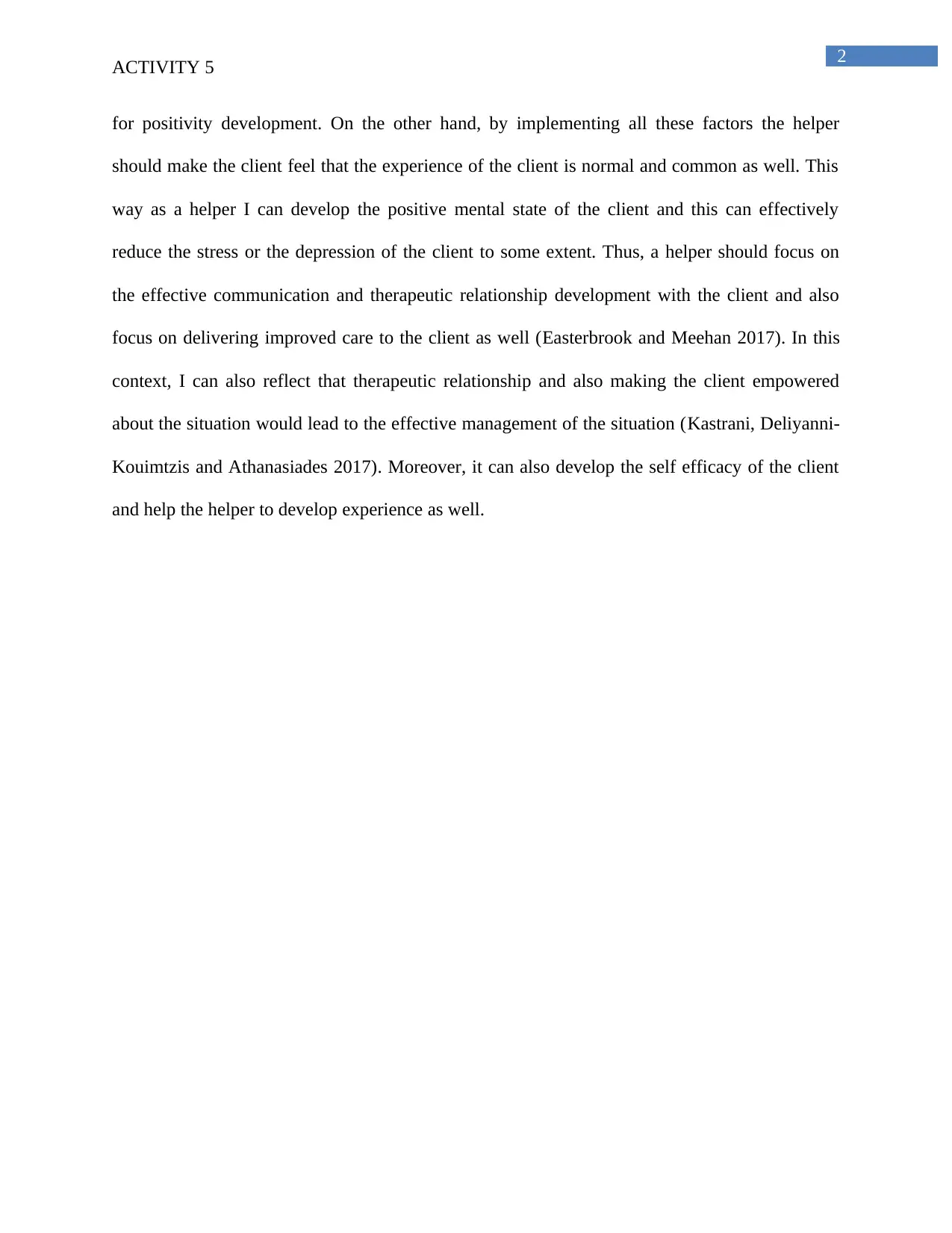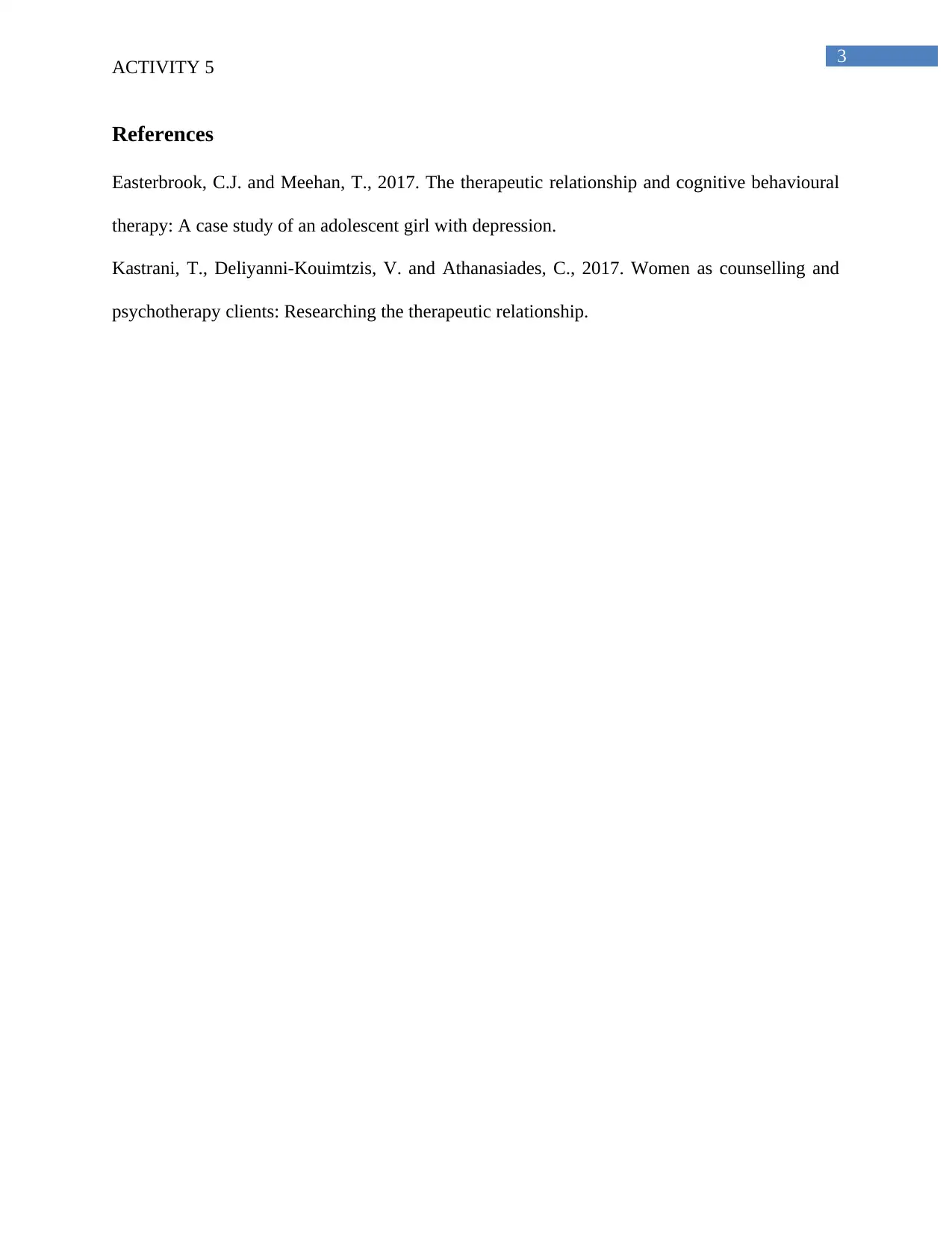Activity 5: Analyzing Therapeutic Dynamics in Alicia and Jim's Case
VerifiedAdded on 2022/08/13
|4
|596
|11
Case Study
AI Summary
This assignment presents a case study analysis of Alicia and Jim's therapeutic relationship. It explores Alicia's perceptions of Jim as a helper and how her feelings fluctuate between appreciation and frustration. The analysis highlights the importance of transparency and positive feelings in the patient-helper dynamic, noting that Alicia views Jim's authority as beneficial. It further reflects on how a helper should foster a transparent, positive, and supportive environment by utilizing effective communication skills, active listening, and therapeutic relationship development. The goal is to empower the client, normalize their experiences, and redirect their thought processes towards positivity, ultimately reducing stress and enhancing their self-efficacy. The assignment references the importance of therapeutic relationships and client empowerment in managing mental health challenges, emphasizing the helper's role in delivering improved care.
1 out of 4











![[object Object]](/_next/static/media/star-bottom.7253800d.svg)